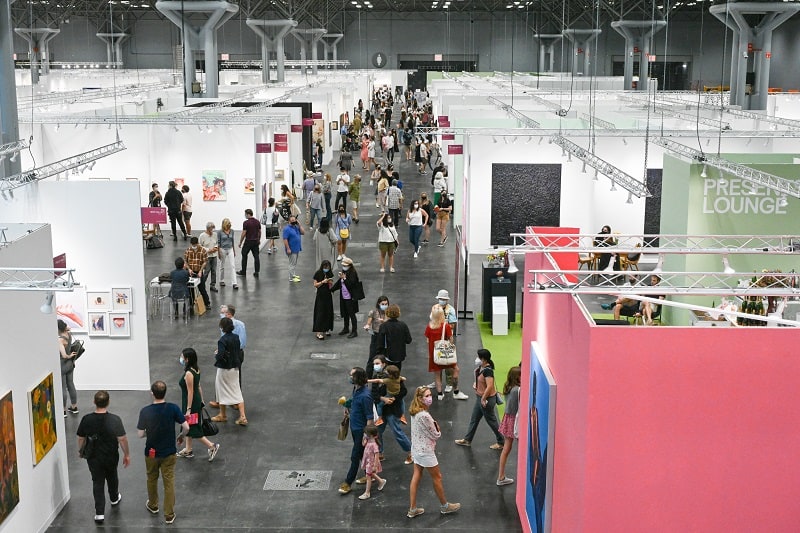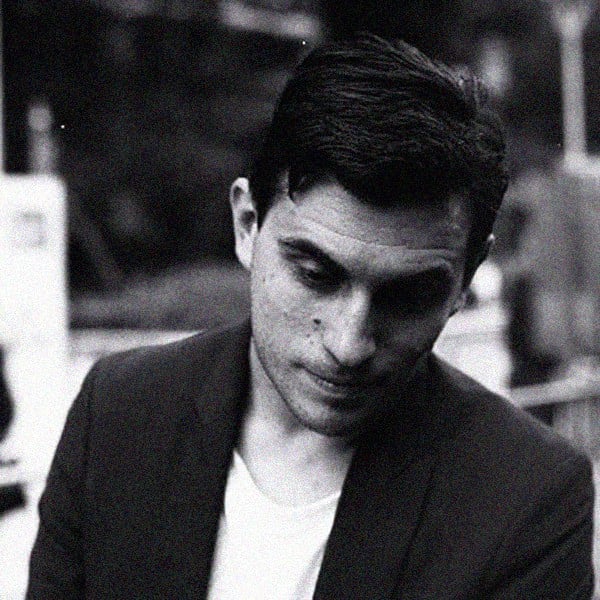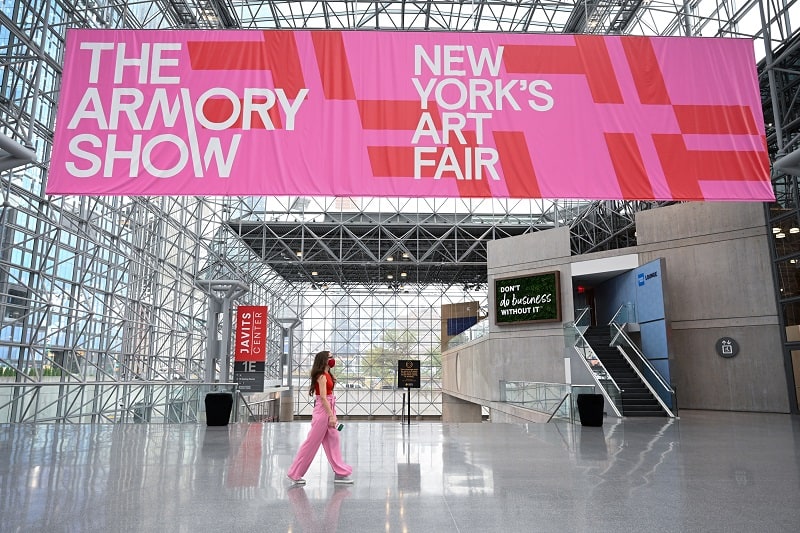Articles and Features
Tell Me Everything: Honesty in the Art World, the Armory Show, and the New Work of Richard Prince


William Pym, Standards & Practices, Volume 18
Comedian Dave Chappelle has a bit in a recent standup special where he talks about being called to the Standards and Practices department of his cable network and being told to do things differently. He’s not too bothered about what the network thinks. There’s a vulgar, uproarious punchline. I like the idea of standards and practices. It makes for a good joke. The enforcer of arbitrary rules and norms, a person whose job it is to frame what’s right, right now. For how can you tame a moment? In the international art world, where I have worked since 2002, I grew to become very familiar with a world of amorality, grandiosity and arrogance. I watched pre-2008 hypercapitalism change everyone’s style, and watched money get darker. Now the art world is being rebuilt, like everything else, in the image of a new generation. And one thing is true now as it was then — the art world is a place of porous standards, and practice takes many forms. I am still here, somehow, and I am the Standards and Practices department.
I filed an early column for Standards & Practices after the March 2020 edition of The Armory Show in New York. It was an elegy and a dream, written a few weeks into the pandemic. Dazed, homebound and disinfecting our groceries, the horizon point of life under lockdown was beyond hazy at that time. In the biz that spring, we had accepted that the Armory was going to be the last fair of the traditional September-to-July contemporary art ‘season’. We had our minds set on Frieze in London that October as our reopening date for global mega-fairs. That date was pushed to Art Basel Miami Beach that December. That date was pushed to Art Basel the following June. Many gave up on predictions after June came and went. The Armory Show 2021, which took place last week, proved to be our longed-for moment. The doors were flung open; with the vaccine card in hand, the scene begins again.
In that column last year, I predicted and hoped for a post-pandemic chapter change in the global art world, a pivot in style and outlook. “More virtual, more nimble, more socially responsible,” I wrote. All those things did happen, to varying degrees. Virtual space did become a true industry in the past 18 months, as basic as slightly elevated web design adding ornament and freshness to a banal jpeg offering of work, or as sophisticated as navigable fairs you could stroll in 3D. Business, as a result, did become nimbler insofar as people had to abandon the noble old idea of seeing art in person before they bought it, since that simply wasn’t possible: in other words, a sludgy and long-contested battle about principles and ‘real’ experience was jolted to a conclusion because there wasn’t another option. As far as social responsibility goes, it’s a slower burn. The Gallery Climate Coalition, for example, an organization founded last year with great ambition for better environmental practice in the business, asks a lot of its participants, many of whom are accustomed to working a certain way. That fact — of old habits dying hard — applies to ethics too. There has been no great revolution, just focused aspiration. Big new-era change is all still in the testing stage, as one might well expect it to be, considering we are still living under the conditions of the pandemic. Very little has been proven in the real world.

That said, I was in the real art world last week. The 2021 Armory Show was a real fair, with 18-dollar-a-glass champagne and 16-dollar tiny paninis and large-scale installations and a young gallery section and shiny things and people in silly clothes. It was smaller, perhaps a hundred galleries smaller than years, in large part due to fierce ongoing travel restrictions to the US, and there were fewer artworks costing a million dollars or more, most likely because the rejigged calendar means Art Basel, where the great trophies are sold, is happening next week. There were fewer visitors, palpably so, but there were still tens of thousands of them, which is significantly more than the four people who live in my house. Overall, you could squint your eyes and feel like 2020 never happened. Nevertheless, things are different from 18 months ago. Of course, they are. And locating change in all its fine nuance, naming it — as this column always advocates — is in the art itself.
At the booth of Two Palms, a high-end New York printer hung 12 four-colour photographic silkscreen prints, 8 feet tall and two feet wide, in faded earth tones. They are thick with horizontal striations. One realizes, with the typewritten words popping up through the towers of lines, that these are close-up depictions of an archive of index cards, organized by category. Reading the press release one discovers that they derive from the joke archive of Milton Berle, an American comedian whose 80-year career spanned vaudeville to television, the entirety of the 20th century. Further, one discovers that this archive belongs to the very famous American artist Richard Prince, who also made this series of works. I doubt anyone would have guessed that he made them. They are called Tell me Everything.
Prince became well known in the second half of the 1980s for his text works that recycled mid-century Borscht Belt humour and allowed them to mutate in feeling, from the desperate to the absurd to the profane. Without the inflection of a voice telling the joke, Prince’s painted works could slip in meaning and interpretation: sad on one viewing, hilarious on the next. The joke paintings spoke of a continuation of humour and a continuation of culture, of social mores and conventions, of what endures and what goes out of date, and most of all of the essential building blocks of common experience. The imagery in Tell Me Everything is thus something of an acknowledgement and confession, a physical image of the type of place where Prince’s jokes come from and the durability of his themes. “woman widow twins old man old maid mother man” cascades down Tell Me Everything (Man). In these stacks of index cards, the space between words is an indication of how much there is to say about each topic and how funny they can be. This is the stuff of our lives. The yellowing cardstock and wrinkled edges speak directly of the passage of time.
These images are very simple. They are easy to understand, and they produce a natural concrete poetry. They work, they work straight away, and they can work for anyone, and as such they feel very empowering. At the Armory Show, and with these works in particular, I relished the idea that we have a wonderful opportunity at this moment in time to drop pretension, express less fealty to fashion, and to focus on the value of what we share. If we treat post-pandemic culture as a tabula rasa, we may rebuild certain aspects of our culture from scratch, with cleaner values. Lean into the clarity of honesty, in other words, and see how that makes us feel as we grope around for the unity of things we all share. Tell Me Everything, indeed. In the spirit of honesty, I’ll point out that this series of works have been made before, almost exactly like this, by the 60-year-old New York artist Erica Baum, who is widely known and generationally aligned but not nearly as rich or famous as Richard Prince. Prince may not have done this deliberately, or opportunistically. But I would be remiss, after noting everything that these works promise about the joys of clarity, to say nothing.
Relevant sources to learn more
William Pym, Standards & Practices, Vol. 13 : Thomas Hirschhorn and Our Life in Ruins
William Pym, Standards & Practices, Vol. 14 : A Mellowing Dictator. How I Learned to Stop Worrying and Love Jonathan Meese
William Pym, Standards & Practices, Vol. 15 : Yours For the Taking: Justine Kurland’s Continuing Story of Freedom in America
William Pym, Standards & Practices, Vol. 16: Cooler Heads. Yue Minjun and the Lessons of the Recent Past
William Pym, Standards & Practices, Vol. 17: New Thoughts on Ugliness. Information, Visualisation, and Hans Haacke’s Dream